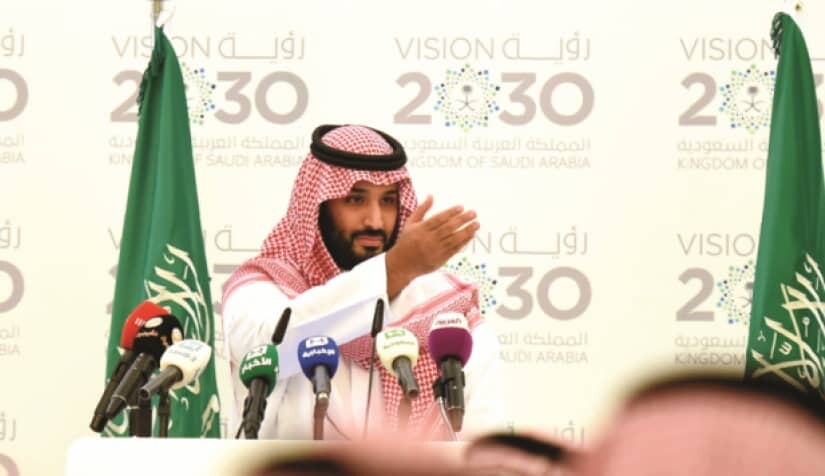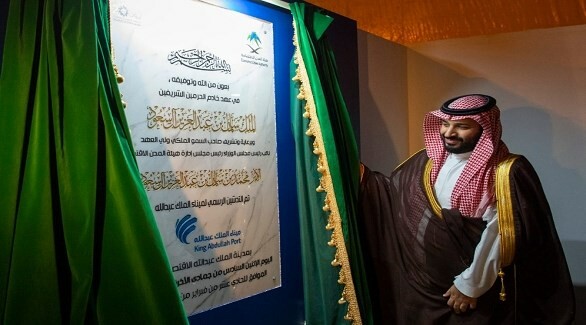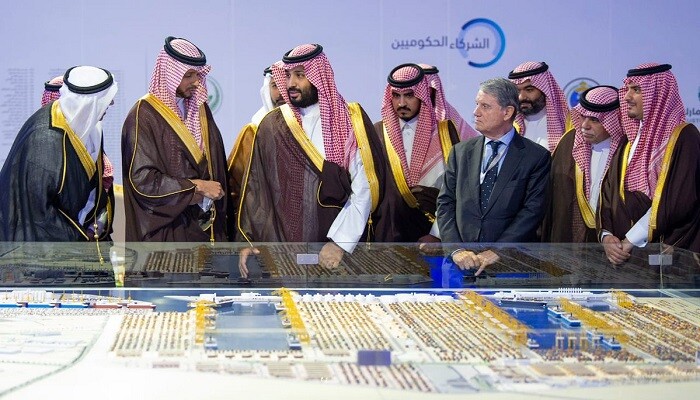The KSA’s Vision 2030: “Our most significant wealth, which is not equal to any other wealth no matter how big it is, is ambitious people, most of whom are young people, they’re the pride of our country and the guarantee of its future.”
With his usual confidence and inspiring will, Prince Muhammad bin Salman, the Saudi Crown Prince, Deputy Prime Minister and Chairman of the Council for Economic and Development Affairs, stood to chart the road to making the Kingdom of Saudi Arabia a great country. A state that has proven its distinction and capabilities politically, economically, socially and culturally.
Despite the long history and culture of Saudi Arabia that are deep in time, the beginning of the real Saudi success story was in 2016 with a vision based on the strengths of this country and its unique capabilities, the vision of the present for the future, the KSA’s Vision 2030. This vision has achieved tangible results during the first five years for an ambitious nation that builds a brighter future.
How Did Mohammed bin Salman Make His Kingdom a Superpower?
As one of the most prominent politicians, economists, and intellectuals in the Kingdom, the Arab world and the world in general, bin Salman was armed with his ambition, leadership, and ability to manage the state internally and externally, to lead the Kingdom to the ranks of major countries, achieving development and prosperity. Because bin Salman is aware that the oil resources are not renewable, he has taken it upon himself to transform the Saudi economy into a non-oil economy and reduce the Kingdom’s dependence on its oil resources. Thus, he announced “The Saudi Vision 2030” on April 25, 2016, to coincide with the date set for announcing the completion of the delivery of 80 giant government projects, of which the cost of each range between 3.7 billion and 20 billion SR.

The Main Themes of The KSA’s Vision 2030
During the first five years, “The KSA’s Vision 2030” reached tangible results for an ambitious nation-building a brighter future. The vision realization programs have achieved remarkable successes in the three vision axes:
A Vibrant Society: This axis progressed as a result of adopting healthy lifestyles, serving the pilgrims from all over the world, in addition to paying attention to archaeological sites and including them in the UNESCO World Foundation.
A Thriving Economy: This pillar achieved the 2030 target for women’s participation in the workforce in 2020. The assets of the Public Investment Fund have grown significantly, and the contribution of small and medium enterprises to the GDP has also increased.
An Ambitious Nation: This axis has made progress in the two pillars of “Effective Government” and “Responsible Citizenship,” as non-oil revenues increased significantly in 2020, and the number of volunteers doubled annually to reach 409,000 volunteers in 2020.

The Saudi Economy: A Record Speed Towards the World
In its ambitious plan, the Kingdom of Saudi Arabia focused on transforming the Saudi Public Investment Fund into a sovereign fund with assets estimated at two trillion dollars to 2.5 trillion dollars, thus becoming the largest sovereign fund in the world.
Prince bin Salman revealed that the fund will control more than 10% of the investment capacity in the globe, and the size of its holdings is estimated at more than 3%” of global assets. Through this fund, Saudi Arabia will be an investment power, which will be a major driver of the globe, and not only the region.
On the other hand, according to his plan to reduce dependence on oil resources, bin Salman believed that Saudi Arabia could achieve this economic plan even if the price of oil was thirty dollars or less, and that it was almost impossible for the price of oil to break thirty dollars by virtue of global demand. The Aim of this plan is to increase non-oil revenues six-fold from about $43.5 billion to $267 billion annually, in addition to increasing the share of non-oil exports from 16% of the current GDP to 50% of the output. With this plan, Saudi Arabia is seeking to improve its position to be among the top 15 economies in the world.
Transforming Vision 2030 into Reality!
With the transition of Vision 2030 to the next stage, to achieve and deepen the impact and involve the private sector in the transformation journey to bring about a qualitative shift in various sectors, some vision realization programs have been restructured, and new programs have been introduced to reflect the ambitions and capabilities of our country and achieve Vision 2030 to the fullest.
Financial Sector Development Programme:
This programme aims to develop a diversified and effective financial sector that supports the development of the national economy, diversifies its sources of income, and stimulates savings, financing and investment, through the development and deepening of financial sector institutions, and the development of the Saudi financial market to form an advanced financial market.
Financial Sustainability Programme:
This programme aims to improve government performance through spending efficiency, revenue growth, and risk management.
Health Sector Transformation Programme:
This programme aims to restructure the health sector in the Kingdom into a comprehensive, effective and integrated health system based on the health of the individual and society.
The Housing Programme:
This programme provides housing solutions that meet the needs and aspirations of Saudi families, with a focus on sustainability and technology.
Human Capacity Development Programme:
The programme seeks to ensure that the Saudi citizen possesses capabilities that enable them to compete globally, through the promotion of values, the development of basic and future skills, and the development of knowledge.
National Industrial Development and Logistics Programme:
The programme aims to transform the Kingdom into a leading industrial power and a global logistics platform by maximizing the value generated from the mining and energy sectors and focusing on the axes of local content and the Fourth Industrial Revolution, so that the program contributes significantly to maximizing and diversifying the economic impact of the targeted sectors.
The National Transformation Programme:
The programme aims to develop the necessary infrastructure and create an enabling environment for the public, private and non-profit sectors, by focusing on achieving excellence in government performance, supporting digital transformation, contributing to the development of the private sector, developing economic partnerships, promoting community development, and ensuring sustainability of vital resources.
The Pilgrims service programme:
This programme aims to enrich and deepen the experience of Hajj and Umrah by providing exceptional services at all stages of the pilgrims’ journey.
Privatization Programme:
The Privatization Programme aims to enhance the role of the private sector in providing services and making government assets available to it, which improves the quality of services provided and contributes to reducing costs. It also stimulates economic diversification, enhances economic development, and increases competitiveness to face challenges.
Public Investment Fund Programme:
The programme aims to achieve the vision of the Public Investment Fund to diversify the economy in the Kingdom through international and local strategic investment.
Quality of Life Programme:
The programme is concerned with improving the quality of life for the individual and family by creating the necessary environment to support and develop new options that enhance the participation of citizens, residents, and visitors in cultural, recreational, sports and tourism activities.

Latest Numbers
The data of the Saudi General Authority for Statistics, for August, showed that the Saudi economy achieved a tremendous growth of 11.8% in the second quarter of 2022, recording the highest growth rate in 11 years.
Estimates showed that the real GDP of Saudi Arabia grew by 11.8% in the second quarter of 2022, compared to the same quarter of 2021. The growth recorded in Saudi Arabia’s GDP during the second quarter of this year is the highest since the third quarter of 2011 when it reached 13.6 at the time.
Oxford Economics also expected that the Saudi economy will exceed the trillion-dollar barrier for the first time this year, and indicated that the growth of Saudi GDP will reach 7.5% in 2022, noting that the International Monetary Fund expects growth to be in the range of 7.6%.
Among the goals of “The KSA’s Vision 2030” is for Saudi Arabia to become among the 15 largest economies in the world by 2030, and to record an expected domestic GDP of $1.7 trillion.
You may also read about The Arab Parliament Honours Prince Mohammed bin Salman with the Leader’s Medal